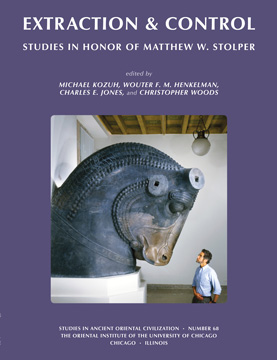First two paragraphs of the article
The study of the first. Persian empire requires the mastery of a number of ancient and modern languages, and ideally that of several academic disciplines. Matthew has dedicated his entire scholarly career to that demanding subject, de voting most of his time to Elamite texts, Old Persian inscriptions, and late Babylonian business and administrative archives. I am pleased to offer him as a token of esteem this brief inquiry involving two corpora of sources that have attracted his attention over the years: the archive of t be Eanna temple in the Babylonian city of Uruk, and the Bisitun inscription of Darius the Great.
The Persian empire experienced its first major political crisis after the death of Cambyses. Babylonian documents acknowledge as his successor a certain Barziya (Bardiya) in the spring and summer of 522, but the ident it y of this personage remains uncertain. According to the version of events presented by Darius in the Bisitun inscription, Cambyses killed his own brother Bardiya. The n an imposter named Gaumata claimed to be Bardiya and seized the throne. Soon thereafter Cambyses probably died a natural death and Darius entered the scene to remove the usurper and re instate the legitimate ruling house. Many scholars now suspect that the account may have been falsified by Darius to conceal the fact that he murdered the real Bardiya in order to usurp the throne, but much uncertainty remains and other scenarios that have been proposed seem equally plausible.1 Other sources, mainly Greek, contradict each other on several points and appear to reproduce various threads of oral tradition, with all the inconsistencies associated with oral memory. According to the Bisitun inscription, Bardiya was killed by Darius on September 29, 522.
Publication Type
- Article



